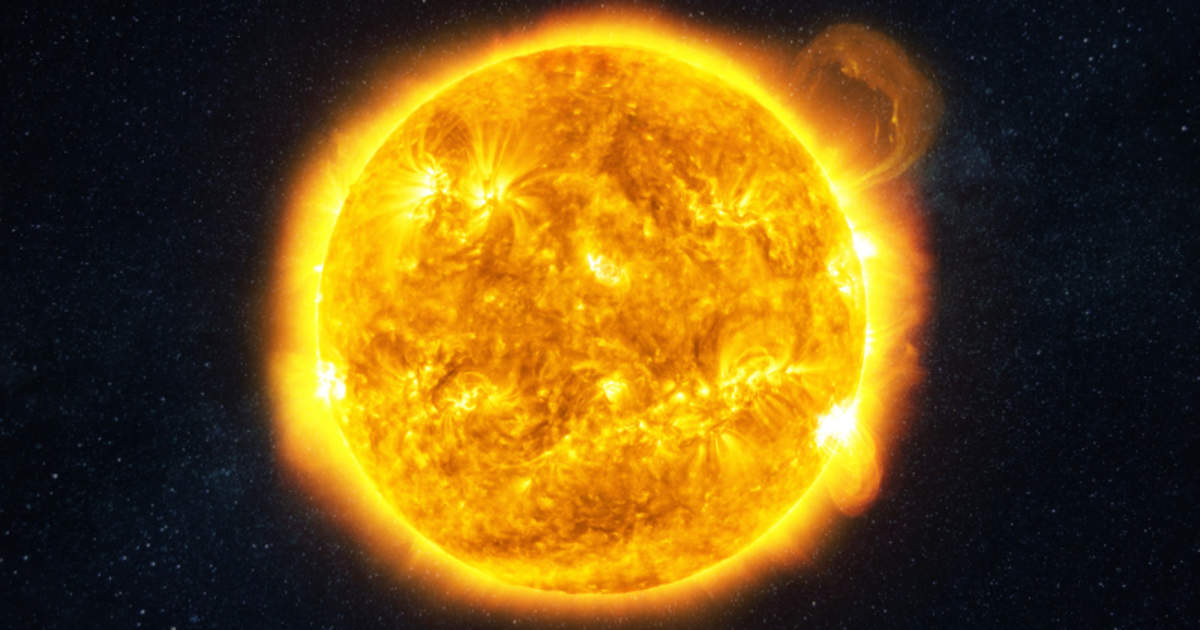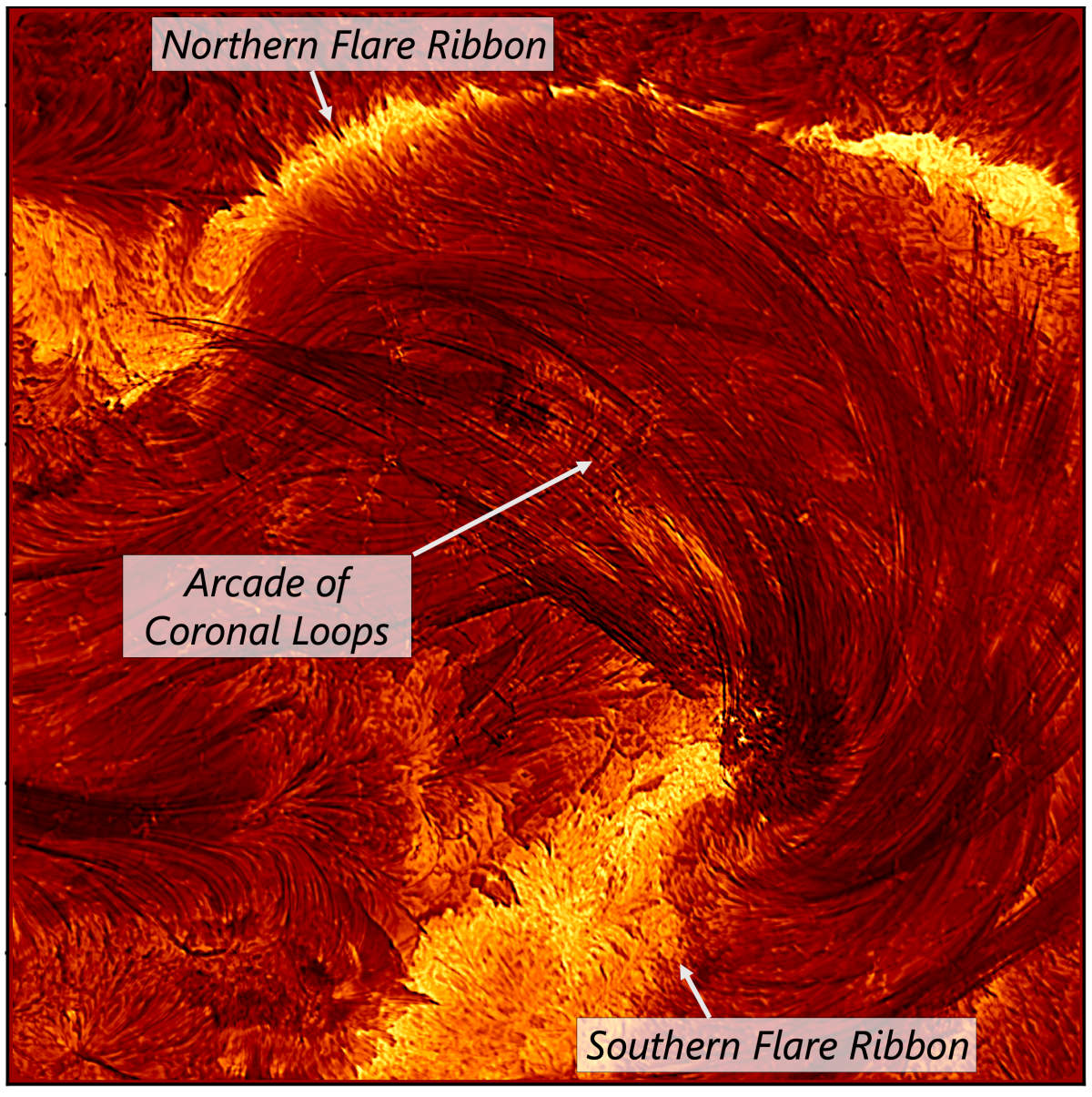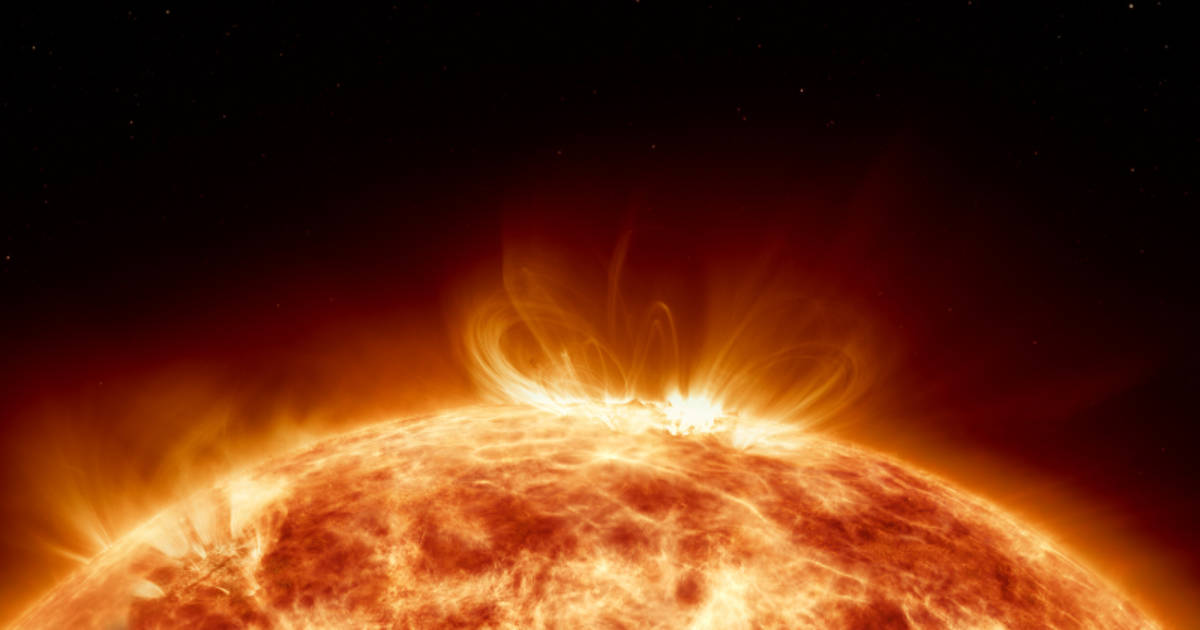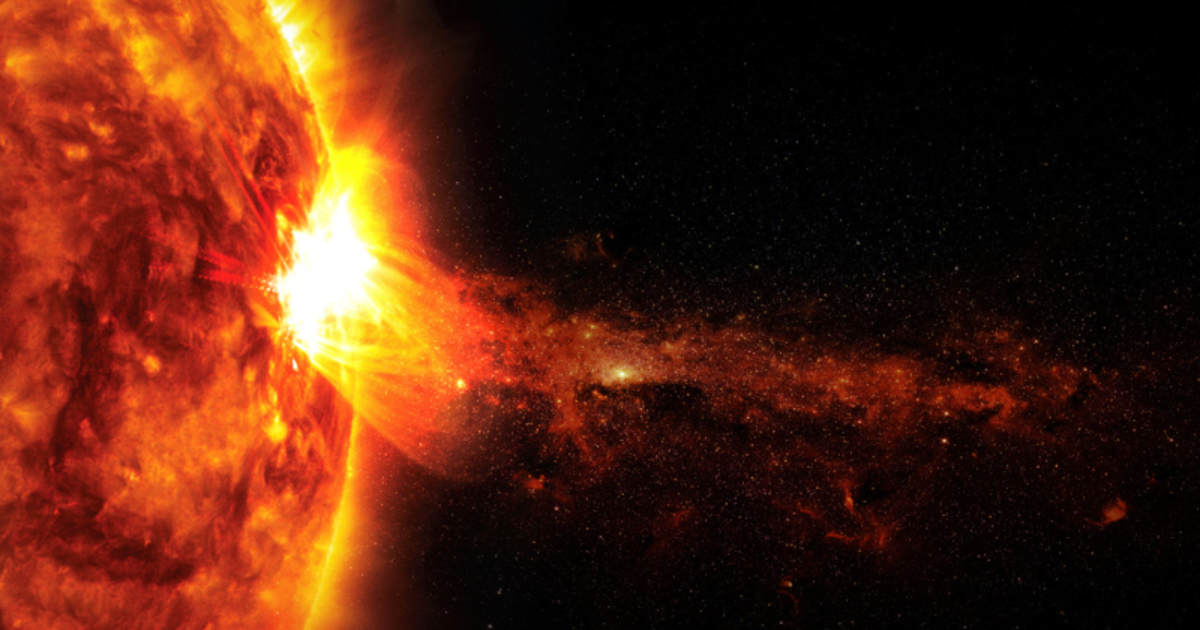Highest-resolution images of solar flare and coronal loops captured by Inouye Solar Telescope

Astronomers have taken the clearest H-alpha images of a solar flare, revealing the finer details of the Sun’s magnetic structure and coronal loops, which could change how we understand solar magnetism and improve space weather forecasting. The complete data set and analysis are published in a paper titled “Unveiling Unprecedented Fine Structure in Coronal Flare Loops with the DKIST,” which appears in The Astrophysical Journal Letters. Using the Daniel K. Inouye Solar Telescope, built and operated by the National Solar Observatory (NSO), astronomers captured dark coronal loop strands with unprecedented clarity during the decay phase of an X1.3-class flare on August 8, 2024, at 20:12 UT.

According to Phys.Org, the loops averaged 29 miles in width, possibly as thin as 13 miles, making them the smallest coronal loops ever imaged. Coronal loops are arches of plasma that follow the sun's magnetic field lines. They often appear before solar flares, which cause sudden bursts of energy when some of these magnetic field lines twist and snap. This release of energy drives solar storms that can affect Earth's vital infrastructure. Astronomers at the Inouye Observatory look at sunlight at the H-alpha wavelength (656.28 nm) to see specific features of the sun. This method reveals details that are not visible in other types of solar observations. "This is the first time the Inouye Solar Telescope has ever observed an X-class flare," remarked Cole Tamburri, the study's lead author, who is part of the Inouye Solar Telescope Ambassador Program while completing his Ph.D. at the University of Colorado Boulder (CU), in a press release.

The program helps Ph.D. students connect and share Inouye data knowledge with the solar community. "These flares are among the most energetic events our star produces, and we were fortunate to catch this one under perfect observing conditions." The team includes scientists from the NSO, the Laboratory for Atmospheric and Space Physics (LASP), the Cooperative Institute for Research in Environmental Sciences (CIRES), and CU. They focused on the very thin magnetic field loops found above the flare ribbons. On average, the loops measured about 29 miles across, although some were at the telescope's resolution limit.

"Before Inouye, we could only imagine what this scale looked like," Tamburri explains. "Now we can see it directly. These are the smallest coronal loops ever imaged on the sun." The Inouye Visible Broadband Imager (VBI), set to the H-alpha filter, can resolve solar features as small as 14 miles. This resolution is over two and a half times sharper than the next-best solar telescope. This leap in resolution made the discovery possible. "Knowing that a telescope can theoretically do something is one thing," says Maria Kazachenko, a co-author of the study and NSO scientist, in the statement. "Watching it actually perform at that limit is exhilarating."

The original plan was to study chromospheric dynamics using Inouye’s ViSP instrument. However, the VBI data showed ultra-fine coronal structures that can directly improve flare models. "We went in looking for one thing and stumbled across something even more intriguing," Kazachenko explained. Theories have long suggested that coronal loops could be anywhere from 6 to 62 miles in width. However, confirming this range through observations has been impossible until now.

"We're finally peering into the spatial scales we've been speculating about for years," explained Tamburri. "This opens the door to studying not just their size, but their shapes, their evolution, and even the scales where magnetic reconnection—the engine behind flares—occurs." Researchers suggest these loops could be the fundamental building blocks of flare architecture. They are individual strands rather than bundled structures. The imagery is breathtaking. Dark, thread-like loops and brilliant flare ribbons are captured in stunning detail. "It's a landmark moment in solar science," he concludes. "We're finally seeing the sun at the scales it works on."









